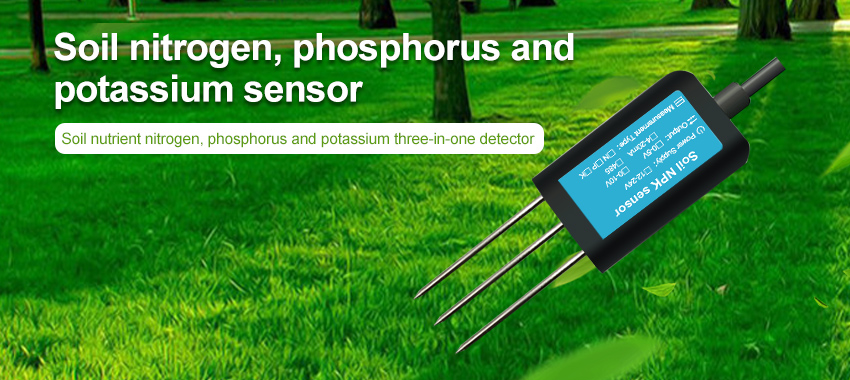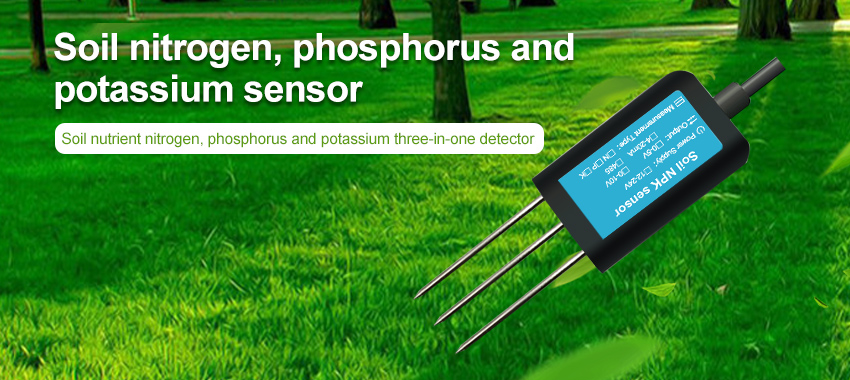In today's fast-paced world, agriculture plays a critical role in sustaining the ever-growing global population. To meet the rising demand for food, it has become imperative to maximize crop production while minimizing resource wastage. In this pursuit of sustainable and efficient farming practices, soil sensors have emerged as powerful tools that aid farmers in making informed decisions about irrigation, fertilization, and overall crop management. By harnessing the power of soil sensors, farmers can optimize their farming practices, improve yields, and promote environmental sustainability. In this article, we will explore how soil sensors are revolutionizing crop management and paving the way for a more efficient and sustainable agricultural future.

Understanding Soil Sensors:
Soil sensors are devices that measure various parameters within the soil, such as moisture content, temperature, nutrient levels, and pH. These sensors are usually installed at multiple depths in the soil profile to capture data representing the entire root zone. The data collected by soil sensors provides valuable insights into the soil's physical and chemical properties, which are essential for effective crop management. With advancements in technology, soil sensors have become more affordable, accurate, and easy to use, making them accessible to farmers of all scales.
Optimizing Irrigation Practices:
Water is a precious resource, and efficient irrigation practices are crucial for crop health and productivity. Soil sensors play a vital role in optimizing irrigation by providing real-time data on soil moisture levels. This data helps farmers determine when and how much water to apply, ensuring that crops receive adequate hydration without wasting water through over-irrigation. By closely monitoring soil moisture content, farmers can prevent both water stress and waterlogging, which can negatively impact plant growth and yield. Additionally, soil sensors enable farmers to detect variations in moisture distribution throughout the field, allowing for targeted and precise irrigation.
Enhancing Nutrient Management:
Proper nutrient management is essential for optimal crop growth and development. Soil sensors provide valuable information about nutrient levels in the soil, enabling farmers to make informed decisions regarding fertilizer application. By monitoring nutrient levels in real-time, farmers can adjust their fertilization practices based on the specific needs of the crops. This precision reduces the risk of over-fertilization, which can lead to environmental pollution, and under-fertilization, which can result in nutrient deficiencies and reduced yields.
Managing Soil pH and Temperature:
Soil pH and temperature are critical factors that influence nutrient availability and microbial activity in the soil. Soil sensors allow farmers to monitor pH and temperature levels, providing insights into soil health and potential issues. By maintaining optimal pH levels, farmers can ensure that essential nutrients are readily available to plants. Similarly, monitoring soil temperature helps farmers plan their planting schedules and manage the germination and growth of crops more effectively.
Detecting Soil Salinity:
Excessive soil salinity is a widespread problem in many agricultural regions worldwide. High salt levels in the soil can hinder plant growth and reduce crop yields. Soil sensors equipped with salinity sensors allow farmers to identify areas with elevated salt levels and take appropriate measures to mitigate the problem. By detecting soil salinity in real-time, farmers can implement strategies such as leaching excess salts, selecting salt-tolerant crops, or adjusting irrigation practices to minimize the impact of soil salinity on crop productivity.

Supporting Data-Driven Decision Making:
The data collected by soil sensors forms the basis for data-driven decision making in agriculture. By integrating soil sensor data with other relevant information, such as weather forecasts and crop growth models, farmers can obtain comprehensive insights into their farming operations. This data-driven approach enables precise and targeted interventions, promoting efficient resource allocation, reducing waste, and maximizing yields. Furthermore, soil sensor data can be stored and analyzed over time, allowing farmers to identify trends and patterns that help optimize long-term crop management strategies.
Challenges and Future Developments:
While soil sensors have undoubtedly revolutionized crop management, there are still challenges to address and areas for future development:
a. Calibration and Interpretation: Soil sensor data needs to be properly calibrated and interpreted to ensure accurate decision-making. Efforts should be made to develop user-friendly interfaces and analytical tools that simplify data interpretation for farmers.
b. Scalability and Affordability: Large-scale adoption of soil sensor technology can be hindered by factors su







